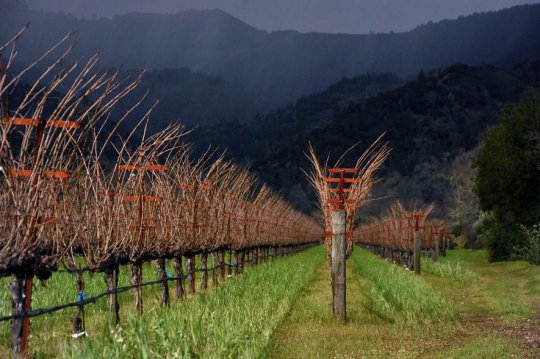Adapting canopy management to the lyre system
This practice is generally better suited to low-density vineyards, for the production of average to high yields, and would appear to have lower costs compared to a traditional trellising system. However, a vineyard managed using the lyre system may also require some adjustments, apart from the adaptation at the planting stage, i.e. the choice of planting material, row orientation and planting distance:
-
Lyre training requires an additional year to reach the size required for training
-
Higher installation costs, up to 20% more than for the installation of a vertical trellis vine. Even if the cost is reduced for lyre training for low density, the split foliage associated with a higher yield requires heavier, more specifically adapted equipment. The installation of a lyre system can cost €30,000/ha compared to €25,000 for vertical vines, since it requires more ties, tensioners, staples, and wires (central wire, supporting wire, trellising wire, lifting wire), and the stakes, particularly those at the end of the rows, must be sturdier because of the additional load.
-
Management of the water and mineral supply needs to be adapted. Due to the increased quantity of vegetation, there is more water evaporation through transpiration; lyre-trained vines can consume up to 30% more water than vertical vines. For this reason, this system may be better suited to irrigated vines or, or may require additional installations for irrigation control. Similarly, a vine with more vegetation requires more minerals for its nutrition; lyre-trained vines can produce 40-60% more shoots than a vertical vine. Mineral fertilization should therefore be adjusted accordingly and can represent an additional cost.
-
The lyre training method would seem to show a reduction in intervention time per kg of harvested grapes: leaf thinning and harvesting are facilitated because the bunches are more accessible, it also reduces selection and sorting operations as the grapes tend to be healthier. However, the time spent per hectare seems to be greater than for vertically trained vines, in particular for debudding, leaf removal and destemming operations (140 h/ha compared to 100h/ha for traditional training. Maintenance of the vines requires more labour.
-
Mechanization possibilities may be reduced. Even if, on the whole, the agricultural machinery does not require any particular adaptation, some machines may no longer be suitable, such as mechanical leaf removers. Practices in the vineyard may also need to be modified, e.g. passage in all rows.

